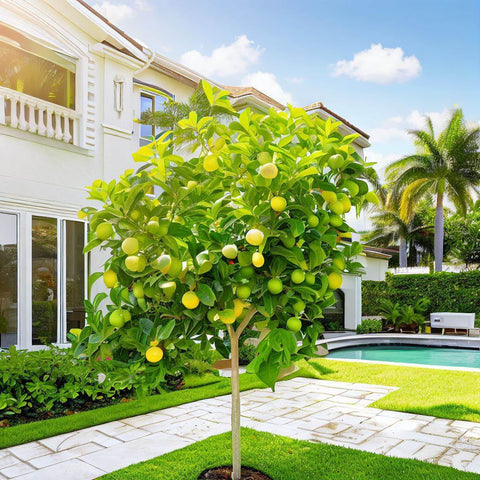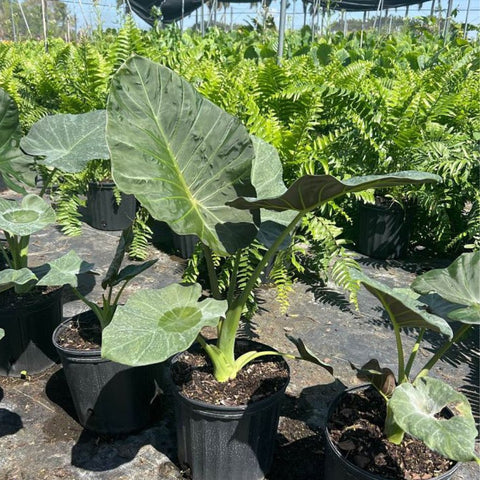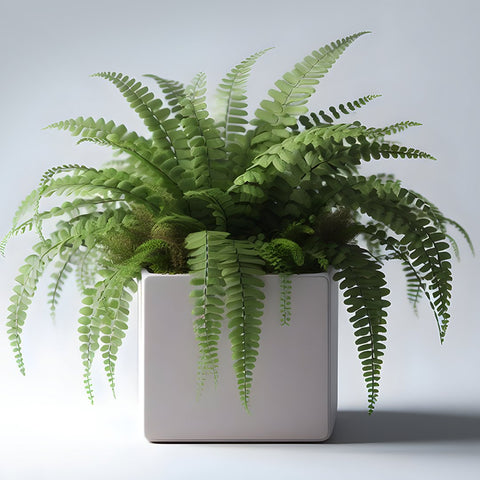Introduction
As the thaw of winter makes way for the refreshing air of spring, it is the perfect opportunity to focus on preparing your garden for the upcoming planting season. At Plantology, we know that nurturing a garden starts from the ground up—literally. Preparing your soil for spring planting is a crucial step that can determine the success of your garden throughout the growing season. In this blog post, we'll delve into the essential steps needed to rejuvenate your soil, ensuring it has the nutrients and texture required to support a thriving garden.
Proper soil preparation involves several strategies that work together to create an ideal environment for plant growth. This includes understanding the type of soil you have, making the necessary amendments, and implementing techniques that improve soil structure and fertility. By dedicating time to these practices, you'll reap the rewards of robust and healthy plants. So, let's get started on transforming your soil into the perfect canvas for your garden!

Understanding Your Soil
Types of Soil
Before you begin any soil preparation, it is essential to identify the type of soil in your garden. The four main types of soil are clay, sandy, loamy, and silt. Each has distinct characteristics that affect how it holds nutrients, drains water, and supports plant roots.
Clay Soil
Clay soil is dense and heavy with high nutrient content. It holds water well but can become compacted, leading to drainage issues. Identifying clay soil is simple due to its sticky texture when wet.
Sandy Soil
Sandy soil is gritty and drains quickly, often requiring more frequent watering. It warms up quickly in spring but doesn’t retain nutrients well.
Loamy Soil
Loamy soil is considered ideal for gardening as it contains a balanced mixture of clay, sand, and silt. It drains well while retaining nutrients and moisture, making it excellent for plant growth.
Silt Soil
Silt soil has a smooth texture and retains moisture better than sandy soil. However, like clay, it can become compacted and hard when dry.
How to Identify Your Soil Type
To identify your soil type, try the “jar test.” Collect a sample of your garden soil, remove debris, and let it dry. Place the soil into a glass jar, fill it with water, and shake it vigorously. Allow the soil to settle into layers. Sand settles quickly, followed by silt, with clay being the last to settle. The proportions of each layer will help you determine your soil type.

Importance of Soil Type in Planting Decisions
Knowing your soil type is critical for making informed planting choices. Some plants thrive in specific soils—clay retains moisture well for thirsty plants, while sandy soil works better for drought-tolerant species. At Plantology, we offer a range of plants suitable for different soil types, ensuring you have the best possible outcome for your garden.
Testing and Amending Soil
Tools for Soil Testing
Soil testing is an integral step in understanding your garden's current conditions. Various tools are available, including Ph test kits and more comprehensive laboratory tests that measure nutrient levels. Regular testing ensures that your soil remains fertile and balanced to meet your plants’ needs.
Key Soil Nutrients
Soil nutrients essential for plant growth include nitrogen, phosphorus, and potassium (often referred to as N-P-K). Secondary nutrients such as calcium, magnesium, and sulfur are also important, as are trace elements like iron and manganese.
Amending the Soil
Based on your soil test results, you can make amendments to adjust nutrient levels and pH. Common soil amendments include compost, peat moss, lime to raise pH, or sulfur to lower it. Incorporate these materials thoroughly using a tiller or garden fork.
Consider enhancing your soil with organic matter to improve fertility and drainage. A wide variety of soil conditioners can be found at gardening center or online at Plantology, helping strike the perfect balance in your garden.

Improving Soil Structure
Importance of Soil Aeration
Soil structure affects root growth, water absorption, and microbial activity. Regular aeration helps break up compacted soil, allowing air, water, and nutrients to penetrate deeper. Use a garden fork or manual aerator tool to gently loosen soil without disturbing plant roots too much.
Creating Drainage and Retention Balance
Depending on your soil type, you may need to improve drainage or water retention. For clay soils, incorporate organic materials like compost to enhance permeability. Sandy soils benefit from enriching materials that retain water, such as coconut coir or vermiculite.
Incorporating Organic Matter
Benefits of Composting
Composting is an excellent way to add essential nutrients back into your soil. It improves soil structure and promotes beneficial bacteria and fungi. Start your compost with kitchen scraps, yard waste, or consider acquiring pre-made compost from sustainable sources.
Mulching Techniques
Mulching involves covering the soil surface with organic material, which conserves moisture, suppresses weeds, and moderates soil temperature. Mulch with shredded leaves, bark, or straw. For best results, apply a layer about 2-3 inches thick around your plants, ensuring they don’t contact plant stems directly.

Weed and Pest Control
Identifying Common Weeds and Pests
Before planting, inspect your garden for weeds and pests. Common weeds such as dandelions, crabgrass, and clover compete with plants for nutrients. Similarly, look out for pests that might overwinter in your garden, including slugs and aphids.
Organic Weed Control Methods
The best weed control starts with prevention. Remove existing weeds manually or use organic solutions such as vinegar sprays. Covering soil with mulch can further prevent weed growth by blocking sunlight.
Natural Pest Deterrents
Encouraging natural predators can help keep pest populations in check. Provide habitats for beneficial insects like ladybugs by planting diverse flora. In troublesome areas, organic pest control solutions such as neem oil may be effective in reducing pest impact.
Creating an Ideal Planting Environment
Optimizing Plant Spacing
Careful planning of plant spacing ensures that each plant has access to adequate light, air, and nutrients. Overcrowding can lead to competition and increased susceptibility to disease. Understand the mature size of each plant species and space them accordingly.
Choosing the Right Plants
Select plants well-suited to your local climate and soil conditions. Drought-resistant plants such as Agave Blue thrive in arid environments, while species like the Adonidia Palm Single are perfect for tropical climates. At Plantology, we offer a range of plants suitable for any garden environment, whether you're looking for stunning Agapanthus Lily of the Nile flows or the regal stature of an Alexander Palm.

Water Management Strategies
Establishing a watering regime that matches both plant needs and soil conditions is essential to ensure optimal growth. Consider drip irrigation or soaker hoses to deliver water directly to plant roots while minimizing runoff and evaporation.
Conclusion
Taking these comprehensive steps for soil preparation results in a well-balanced, nutrient-rich environment optimal for plant growth. At Plantology, we're committed to supporting your gardening efforts with our wide range of plant offerings and gardening innovations. Explore our site for gardening essentials to make your spring planting a successful start to the growing season.
Engage with us today to discover more about how you can transform your garden into a flourishing paradise. Browse our diverse plant collection for results that speak for themselves!
Advanced Soil Enhancement Techniques
Utilizing Cover Crops
Advanced gardeners often incorporate cover crops into their soil preparation regimen for their myriad benefits. Cover crops, such as clover, vetch, or rye grass, can be sown during off-seasons to protect and enrich the soil. These plants prevent erosion, suppress weeds, and enhance soil fertility. When tilled back into the soil, they add organic matter and nutrients, helping maintain a robust ecosystem in your garden.

Implementing No-Till Gardening
No-till gardening is gaining popularity as an eco-friendly gardening method that preserves soil structure and health. By avoiding tilling, you reduce soil disturbance, maintaining the natural soil hierarchy and protecting vital microorganisms that aid plant growth. Instead of turning over the soil, gardeners layer organic material on top, enabling earthworms and other organisms to do the "tilling" naturally. This method minimizes erosion, improves water retention, and fosters a rich microbial community.
Integrating Mycorrhizal Fungi
Establishing a symbiotic relationship between plants and mycorrhizal fungi can revolutionize your garden's health. When added to your soil, these fungi form a network that extends the reach of plant roots, increasing nutrient and water absorption. Plants benefit immensely from this "fungal internet," exhibiting improved growth and resistance to diseases. Mycorrhizal inoculant can be introduced directly into the soil or around plant roots at planting time for enhanced results.
Maximizing Soil Fertility
Companion Planting
Companion planting is a strategic gardening practice involving the grouping of certain plants to enhance each other's growth. For example, planting basil near tomatoes can not only improve growth but also repel harmful insects. Marigolds can deter nematodes when planted adjacent to a variety of vegetables. Understanding these synergistic relationships allows you to make space-saving decisions in your garden while supporting a healthier biodiversity and minimizing pest impact.

Regular Soil Testing and Monitoring
Continued soil testing is crucial to maintain an optimal growing environment. Implement a biannual soil testing schedule to stay informed about changes in nutrient levels and pH balance. This proactive approach allows for timely amendments, such as adding compost or specific nutrient boosters, to keep the soil conducive to healthy plant development.
Customizing Fertilization
Based on your soil tests, customize fertilization to cater to specific plant needs. For nitrogen-heavy crops, consider applying blood meal or fish emulsion, while bone meal or rock phosphate is ideal for phosphorus-deficient soils. Balancing the use of organic and inorganic fertilizers tailored to your garden's requirements ensures sustained fertility and abundant yields.
Sustaining a Healthy Ecosystem
Promoting Biodiversity
A diverse garden ecosystem can reduce pest populations and improve plant health naturally. By planting a variety of species, such as flowering plants alongside vegetables and herbs, you attract a range of beneficial insects and pollinators. This biodiversity helps maintain a natural balance, reducing the need for chemical interventions.
Using Compost Teas
Compost tea, a nutrient-rich elixir made from steeping mature compost in water, can be applied as a foliar spray or soil drench. It introduces beneficial microbes that aid in disease suppression and enhance plant nutrient uptake. Brew your own by aerating compost in water for 24-48 hours or purchase ready-to-use solutions from reliable sources.

Implementing Integrated Pest Management (IPM)
Integrated Pest Management (IPM) is an environmentally friendly approach that combines cultural, physical, biological, and chemical tactics to manage pests. Begin with preventive measures such as crop rotation, habitat diversification, and manual removal. Encourage natural predators and judiciously apply organic pesticides only when monitoring indicates necessary. This method minimizes environmental impact while effectively controlling pest populations.
Expanding Your Gardening Horizons
Raised Bed Gardening
Raised bed gardening offers several advantages, including improved drainage, controlled soil conditions, and ease of access. Construct raised beds using rot-resistant wood, stone, or recycled composite materials. Fill them with a well-balanced soil mix tailored to your crops, allowing for increased density planting and extending the growing season with faster soil warming in the spring.
Exploring Permaculture Principles
Integrating permaculture principles into your garden planning fosters a self-sustaining ecosystem that mimics natural processes. Embrace design techniques such as planting perennial crops, creating water catchment systems, and utilizing companion planting for efficient land use. This holistic approach not only maximizes productivity but also enhances the resilience of your garden.
Vertical Gardening Techniques
Expand your gardening space using vertical gardening techniques, making use of walls, trellises, or dedicated vertical planters. This method is ideal for small spaces and can support a variety of crops, from vining plants like cucumbers or beans to ornamental flowers. Vertical gardens also improve air circulation and add a dynamic visual element to your garden landscape.

Cultivating Sustainability Practices
Harvesting Rainwater
Rainwater harvesting systems can significantly reduce your reliance on municipal water supplies. Utilize rain barrels or more complex cistern setups to collect roof runoff during rainy seasons. This stored water can then be used for irrigation during dry spells, conserving resources and ensuring your plants receive pure rainwater, which is free from chlorine and additives.
Composting for Waste Reduction
Incorporate a robust composting system to recycle organic waste from your kitchen and garden. Use compost bins or piles to transform food scraps and plant debris into rich compost, reducing landfill contributions and closing the nutrient loop. This practice not only enhances soil health but also promotes a sustainable cycle of growth in your garden.
Reducing Chemical Footprint
Minimize the use of synthetic chemicals in your garden by adopting organic gardening practices. Select chemical-free fertilizers, pesticides, and herbicides, and emphasize natural pest control and soil enrichment methods. This commitment to reducing your garden's chemical footprint not only protects environmental health but also contributes to a safer space for wildlife and human visitors alike.

Conclusion
Prepared well, your soil becomes the heart of a flourishing garden, supporting lush growth and bountiful harvests. By leveraging a comprehensive approach—including assessing soil types, amending with the appropriate nutrients, enhancing soil life, and incorporating sustainable practices—you lay the foundation for a thriving ecosystem. Embrace these advanced techniques and transform your garden into a healthy landscape that can adapt and flourish season after season.
Plantology is your partner in achieving this green vision. With our extensive range of plants and gardening tools, embark on your journey to creating a sustainable, vibrant garden tailored to your unique environment. Explore our resources and product offerings to cultivate the garden of your dreams.






























Comments (0)
There are no comments for this article. Be the first one to leave a message!